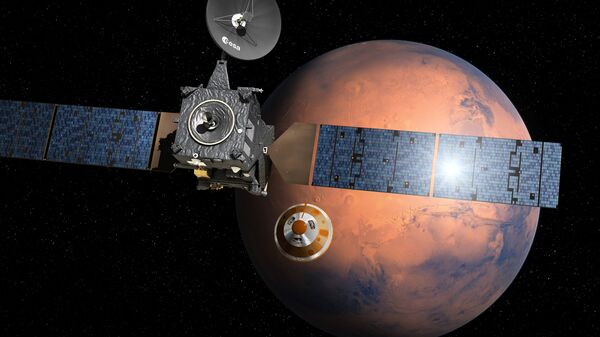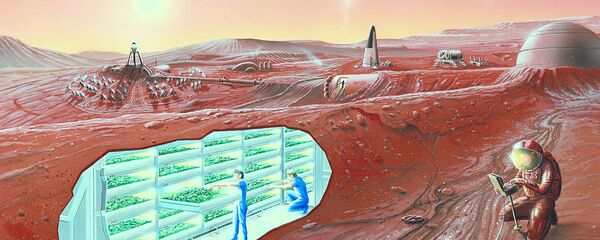The lander is planned to land on Mars on Wednesday after a seven-month journey to the Red Planet. Schiaparelli and its mothership, the ExoMars Trace Gas Orbiter (TGO), were launched on March on a Proton rocket from the Baikonur cosmodrome in Kazakhstan.
The TGO is carrying scientific instruments allowing it to study trace gases in the Martian atmosphere in detail, such as methane, water vapor, nitrogen oxides and acetylene.
Scientists believe that atmospheric gases which might be present in small concentrations of less than one percent could be evidence for possible biological or geological activity on Mars.
Exciting weekend! Deployed @ESA_EDM Sunday & completed my Mars avoidance manoeuvre this a.m. Catch up here: https://t.co/i9cTYvVTkm #ExoMars pic.twitter.com/3KZMlATKuQ
— ExoMars orbiter (@ESA_TGO) 17 октября 2016 г.
The TGO will also map the hydrogen below the Martian surface to a depth of a meter, and monitor seasonal changes in the atmosphere's composition and temperature in order to create detailed atmospheric models.
After the deployment of Schiaparelli, the TGO will receive information about the Martian surface and facilitate its transmission to Earth. Schiaparelli's payload includes instruments to weather conditions as well as the temperature, transparency and electrification of the atmosphere on the surface of Mars.
The joint project between the ESO and Roscosmos is the first of a series of joint missions to find out more about the Red Planet.
In 2020 the ExoMars program will deliver a European rover and a Russian surface platform to the surface of Mars, and in the 2020s its scientists hope to carry out a mission which returns samples from Mars to Earth.



